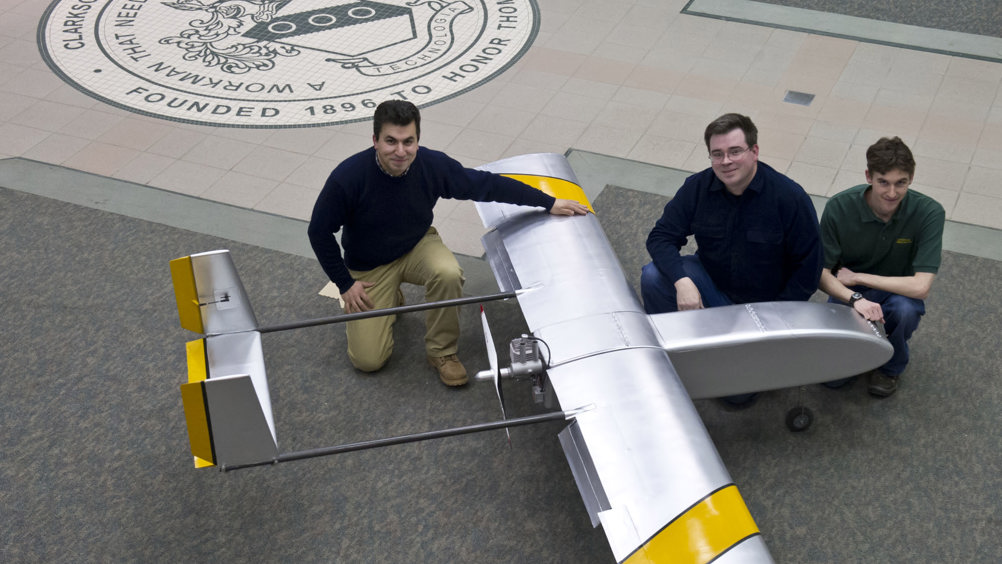Unmanned aerial vehicles may improve wind-farm deployment
Unmanned aerial vehicles (UAVs) designed to gather offshore turbulence data could optimise the deployment of wind-turbine farms.

A team from Clarkson University’s Mechanical and Aeronautical Engineering Department is now readying the Research Aerial Vehicle for Experimental Needs (RAVEN), which was built with $700,000 (£443,000) funding from the US Department of Energy and will first be deployed around Lake Erie.
The team will map offshore wind and turbulence fields and develop best practices for the integration and operation of different instrumentation — including lidar technologies, meteorological towers, UAV measurements, and satellite-derived products.
The RAVEN UAV will acquire horizontal and vertical wind and turbulence profiles at a low altitude. The three-dimensional view of wind characteristics obtained from this project will provide a greater understanding of the variability of wind and turbulence in offshore and coastal areas at heights, scales and precision relevant to wind energy projects.
The data obtained from this study will be used to design wind turbines and wind farms, and to optimise energy capture and reduce the cost of electricity.
Register now to continue reading
Thanks for visiting The Engineer. You’ve now reached your monthly limit of news stories. Register for free to unlock unlimited access to all of our news coverage, as well as premium content including opinion, in-depth features and special reports.
Benefits of registering
-
In-depth insights and coverage of key emerging trends
-
Unrestricted access to special reports throughout the year
-
Daily technology news delivered straight to your inbox










Water Sector Talent Exodus Could Cripple The Sector
Maybe if things are essential for the running of a country and we want to pay a fair price we should be running these utilities on a not for profit...